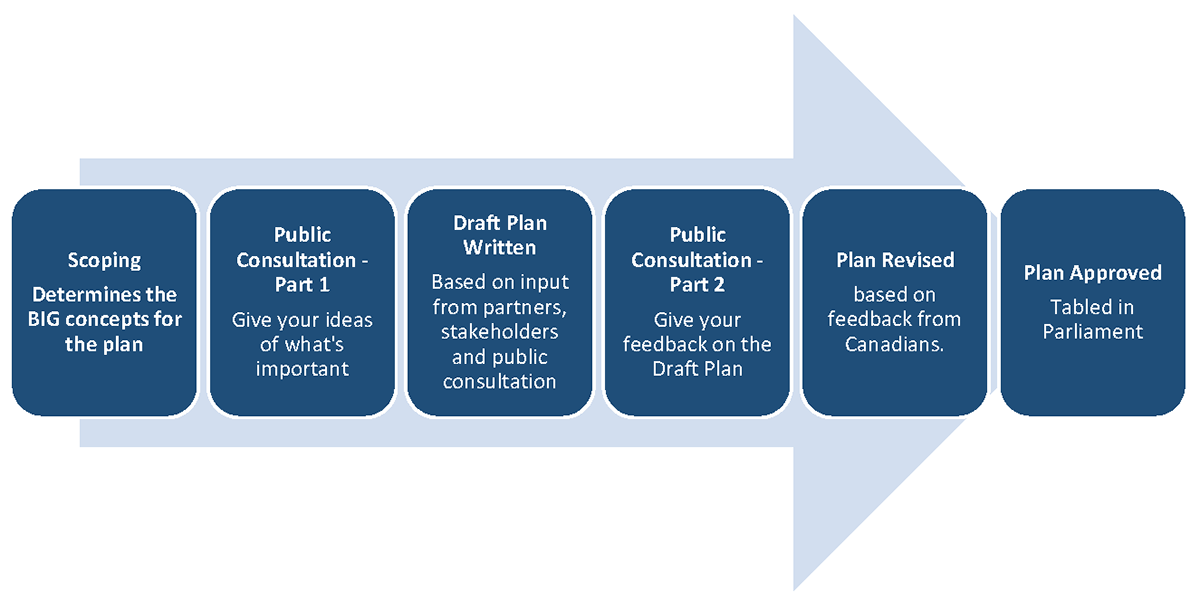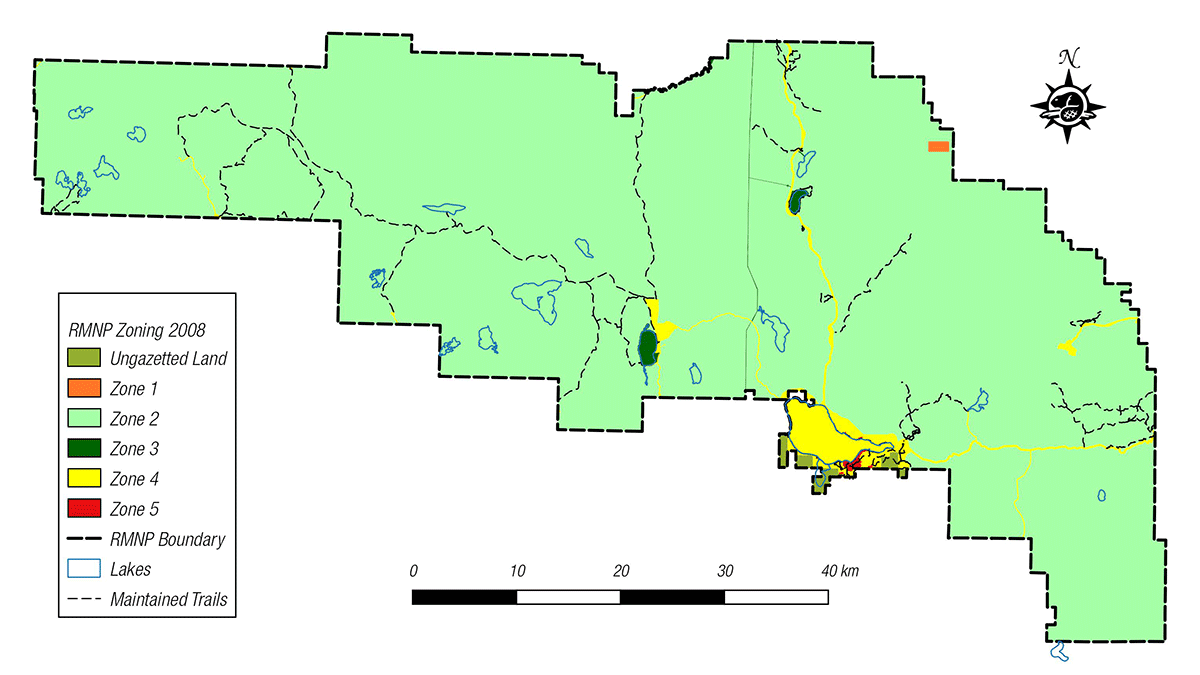
Photo: Perry Au
Park management plan
Riding Mountain National Park
Get Involved
Have your say!
Riding Mountain National Park is updating its management plan.
The ten year management plan will provide a long-term vision for the park. It will also:
- guide how the park is managed and operated;
- reflect Canadians’ interests and input;
- be the park’s primary accountability document to Canadians;
- be tabled in Parliament;
- be part of the legacy for the next seven generations.
Your perspective and input are important. Help shape the future.
Please get in touch to be included on our contact list.
204-848-7227
Write:
Riding Mountain National Park
PO Box 299
Onanole, MB R0J 1N0
Canada
We want to hear from you. If you value Riding Mountain National Park, your voice can help guide the future of this important place.
2023 Riding Mountain National Park Management Planning
What we have done so far
Some stakeholders and Indigenous leaders have already been consulted
The following themes have emerged as the foundation of the plan:
- Improving the health and integrity of land and water;
- Enhancing cultural resource management;
- Connecting Indigenous peoples with their traditional land;
- Improving visitor experiences;
- Increasing cooperative management with Indigenous people;
- Collaborating with partners and stakeholders;
- Managing the Wasagaming townsite;
- Improving park zoning.
- Initial consultation to develop the draft plan.
- Public review of the draft plan.
- Revisions based on public input.
- Review and approval by the Minister of Environment and Climate Change.
- The management plan is tabled in Parliament.
The Planning Process
Parks Canada protects and presents an amazing system of natural and cultural heritage. Each national park, historic site, and marine conservation area has its own management plan. These plans identify key priorities and are the vision for the future They must include input from Canadians.
What is a management plan?
It is many things, including:
- A strategic document laying out how the area is managed and operated;
- An accountability document that is reviewed and updated every ten years;
- A place for Canadians to have their say in how these areas are managed.
What is the planning cycle?
Management plans are typically renewed every ten years. This provides continuity, ensures reasonable goals can be achieved and that the plans stay relevant. They can be updated at any time if something significant changes. Management plans are developed in stages and rely heavily on input from many groups and individuals.

Where are we now?
As of October 2022, Riding Mountain National Park is in the first “Consult” phase. We are collecting contact information from people who want to have their voices heard.
What happens next?
Let us know that you are interested and we will send you information about management planning consultation and how you can share your thoughts. Your voice is important.
Increasing Co-operative Management
Co-operative management is at the core of this management plan.
Working closely with Indigenous partners is critical to the long term success of the plan, and the park.
Co-operative management is a part of addressing historical injustices and finding a new path forward. This is about nation to nation reconciliation, and working together to be stewards of the land. When we work together the future will be different from the past. Co-operative management will help address historical injustices and find a new path forward.
Co-operative management is not a new approach, but it will take time. There will be challenges along the way, but we will address them together with Indigenous partners.
Reconnecting Indigenous People to Traditional Lands
When Riding Mountain National Park was created, Anishinabe people were forcibly removed from their homes and ancestral lands. Barred from harvesting food and medicines. No longer allowed to go to important cultural and spiritual sites. Many continue to feel unwelcome in the park.
Our intention is that this management plan will help change that. It will recognize Indigenous people as stewards and knowledge keepers in their traditional homeland. It will foster physical, cultural, and spiritual connections with the land and water. It will stress the importance of meaningful economic benefit for Indigenous people.
This management plan will help us move to a better future. It is a step towards healing. Towards Mino Bimaadiziwin - the Good Life.
Protecting and improving the land and water
Parks Canada is a global conservation leader. Park staff use the best available science to protect natural and cultural resources. We work with Indigenous communities, conservation groups, academic institutions, and scientific researchers to achieve results.
Our core responsibility is to protect and present Canada’s natural and cultural heritage.
This management plan will focus on protecting and maintaining healthy populations by combining Indigenous knowledge with western science. It will also build in the flexibility to respond to climate change impacts. Additionally, it will emphasize managing Clear Lake alongside the Keeseekooweenin Ojibway First Nation.
Protecting and Improving the Management of Cultural Resources
People have been part of the area’s landscape for thousands of years. Their presence can be seen in the landscapes, objects, and heritage buildings. Stories, traditions, knowledge and language are also legacies of the connection between humans and the land here. Together, these things tell the story of the area now known as Riding Mountain National Park.
This management plan will help improve the protection and presentation of these resources. It will emphasize the importance of archaeological and oral evidence when protecting cultural resources. It will also carefully consider the contemporary cultural resources in the townsite, at the East Gate National Historic Site, and at other areas throughout the park.
Improving Visitor Experiences
Riding Mountain National Park is a four season destination. The park contributes to the local, provincial, and national economy. Park staff is committed to offering authentic, meaningful, and safe experiences. These help people connect, learn about, and appreciate Canada’s environment and history. The park is a place for all people to connect with the land and the water.
As part of a path to co-operative management, the management plan will identify ways to decolonize how the park is publicly presented. The plan will value Indigenous voices, knowledge, and perspectives in park programs including ways to incorporate the richness of the Anishinabe language.
The plan will provide guidance on the future of the Wasagaming townsite and the backcountry. All Canadians, including youth and newcomers, are welcome to experience the outdoors and learn about the environment as part of their visit to Riding Mountain National Park.
Working with External Partners and Stakeholders
We can do more. With this management plan, Parks Canada is seeking opportunities to improve relationships with stakeholders, partners, neighbours, governments, Indigenous peoples, and others.
Input from individuals and organizations who care about Riding Mountain, is valued and critical for the long term success of the park.
Collaboration is at the core of good park management. Gaining a wider perspective and inclusive approach is a primary focus at Riding Mountain National Park.
Improving Park Zoning
Parks Canada has a national park zoning system. The zoning system identifies activities supported in areas to help balance conservation and human use priorities. At Riding Mountain National Park, this includes commercial operations and dwellings in the Wasagaming townsite, and on the shores of Clear Lake.
Zoning is based on the ability of the land or water to support certain activities. The zoning system has five categories.
- Zone I - Special Preservation
- Zone II - Wilderness
- Zone III - Natural Environment
- Zone IV - Outdoor Recreation
- Zone V - Park Services
This management plan will focus on improving the assessment process and ensuring Indigenous perspectives are included in zoning decisions.

Managing the townsite of Wasagaming
The Wasagaming townsite is the major commercial, tourism and recreational hub for Riding Mountain National Park. Dozens of businesses operate here. There are hundreds of cabins and cottages. The main boat launch for Clear Lake is on the edge of town. In the summer, it is a very busy place.
With nearly 95% of park visitors going to Wasagaming, the future of the townsite is critical to the future of the park. It is also important to balance the past with the future, and to ensure park staff are working with all partners when making development decisions.
Other plans and policies
- Date modified :